In this guide, you will learn how to find archived emails in Gmail, then quickly access, view, and retrieve them. I'll cover the crucial differences between archiving, deleting, and muting, and help you discover productivity tips such as bulk archiving, filtering, and labeling your incoming mail.
It's much easier to maintain focus when you know how to properly organize and retrieve your emails. This guide will show you how to set up automatic organization and transform your Gmail from a source of stress into a productivity hub 🚀.
What does archive mean in Gmail?
Archiving in Gmail means removing your emails from the inbox without deleting them. But why do this?
You may receive hundreds of emails every day. Some of them are clearly important, while others not. And sometimes it’s not easy to distinguish, or you may simply not have time to deal with them. They can stay unread for weeks, overwhelming your inbox. In such circumstances, it’s easy to lose important information or miss crucial notifications. Keeping your inbox clean saves you from such trouble.
Archive vs Delete vs Mute in Gmail
To reduce clutter in your inbox, you have three main options: archiving, deleting, or muting messages. Which one to choose and when? Let’s see 🧐.
Option 1: Archive emails in Gmail
This option is best for documents you don’t need right now, but might want to have on hand for the future. Picture your mail as a physical desk, where you can place documents you don't need immediately into desk drawers. With this approach, your desk surface (inbox) stays comfortably empty, and your documents remain safe (archived) for future use.
Key features in archiving:
- Your emails are removed from the inbox, but not deleted.
- All attachments are safely stored.
- If a new message arrives in an archived thread, the thread will be unarchived automatically.
- You can unarchive emails anytime.
Archiving is the ideal choice for important conversations, legal documents, financial records, or travel confirmations.
To archive an email, just select your email and click on the Archive icon. You can find it either in the toolbar at the top or on the right side of the email when you hover over it:
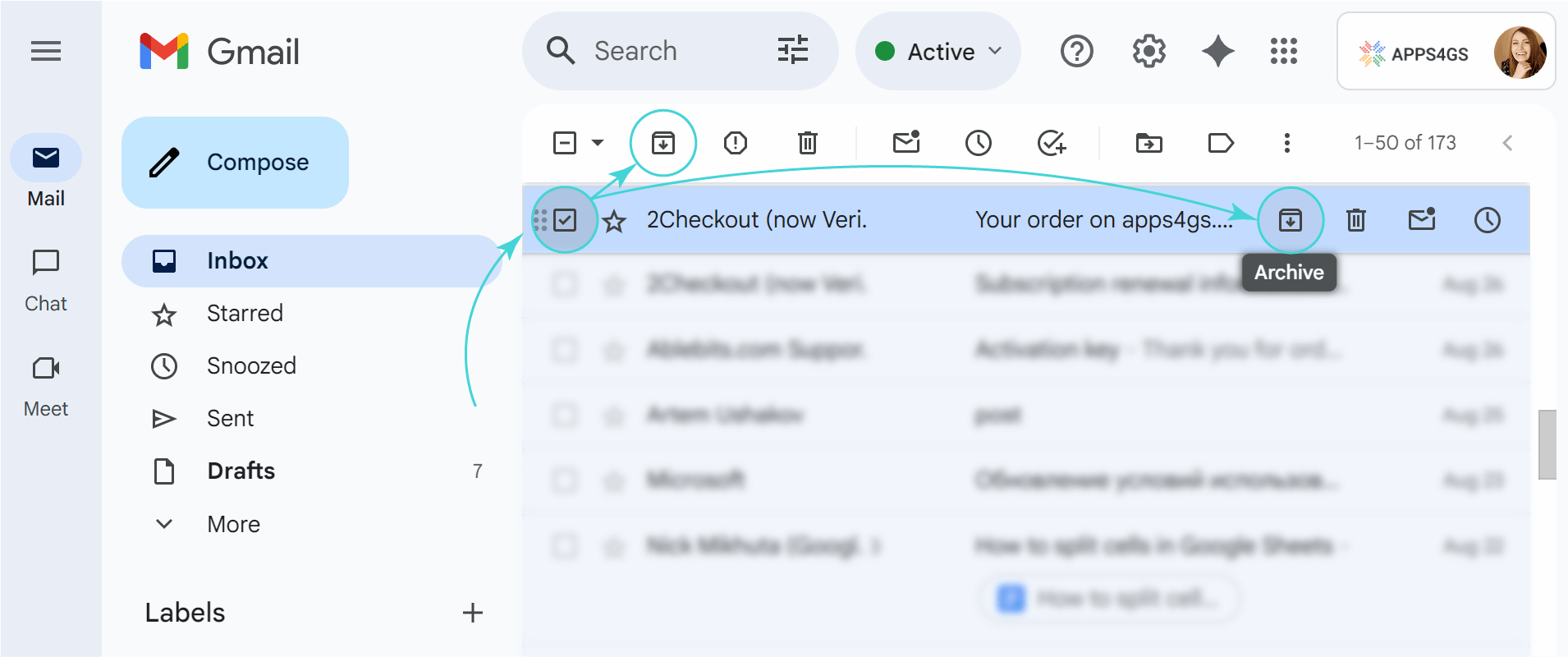
Learn how to find and unarchive emails in the next chapters 😉.
Option 2: Delete emails in Gmail
This option works best for emails you are sure you will never need again. Deleted emails go straight to your trash folder and stay there for 30 days. After this period, they will be permanently removed with all attachments.
Key features in deleting:
- It retrieves storage space in Gmail.
- Deleted emails remain in Trash for 30 days to give you a chance to restore them.
- After 30 days, deleted emails are automatically erased, including all attachments.
- You can manually empty the Trash or double-delete emails at any time if needed.
It’s the best option when you’re dealing with old notifications, expired promotions, conversations that are definitively over, or any sensitive data you don’t want to keep.
Tip: If you receive spam, it's better to Report spam than delete it. It helps to block similar messages in the future.
To delete your message, select it and click the Trash bin on the toolbar or on the right side of the email:
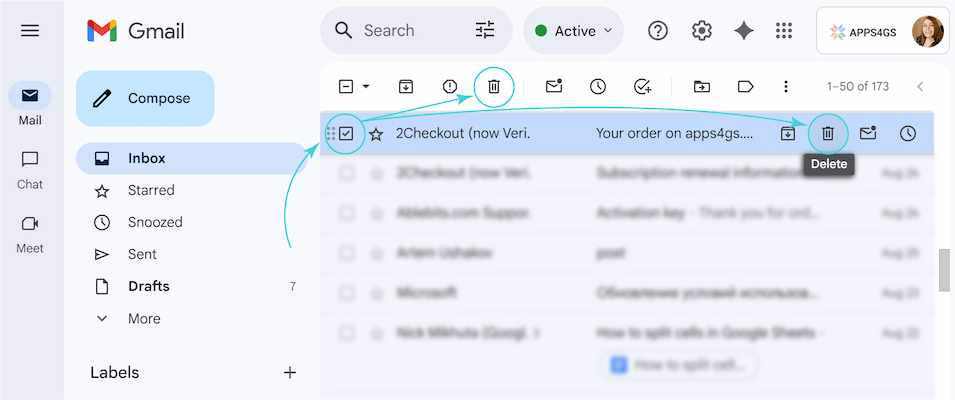
Deleted an important email draft by mistake? Learn how to recover it in this article.
Option 3: Muting email
This option is similar to archiving, as it removes emails from your inbox without deleting them. But it has a major difference: new messages in the thread will skip your inbox. It’s convenient as a subtle way to ignore notifications from a conversation without notifying the sender.
Key features in muting:
- New messages in a muted thread are automatically archived.
- The thread is saved so you can always look back at the conversation if needed.
- Lets you leave a noisy conversation without any notification to the other participants.
With this option, you can quietly step away from long conversations that aren't relevant to you anymore, without actually exiting the thread.
Note: If the message in the thread is sent only to you, you’ll still get it in the inbox so you don’t miss important information.
To silence a thread, select it, click the three-dot menu in the toolbar and choose Mute:
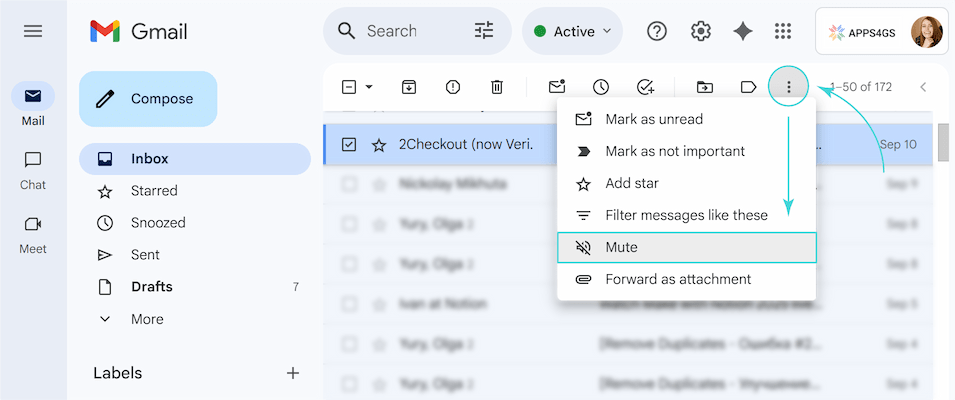
Tip: To stop ignoring a given thread, find it in the All Mail folder, click three-dots in the toolbar and choose Unmute:
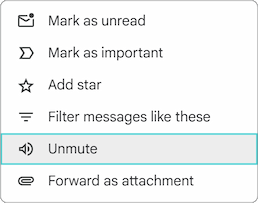
Where do archived emails go in Gmail and how to find them
Let’s dive right in: there is no dedicated Archive folder in Gmail. In fact, Gmail’s archive folder is the All Mail folder, as all your archived emails will be stored here. This folder contains emails from your inbox and outbox, as well as all your drafts.
Next, we'll examine how to find your archived emails there.
How to view archived emails in Gmail in All Mail
The All Mail folder is somewhat hidden on the interface:
- Open your Gmail account.
- Click More on the left side of the screen.
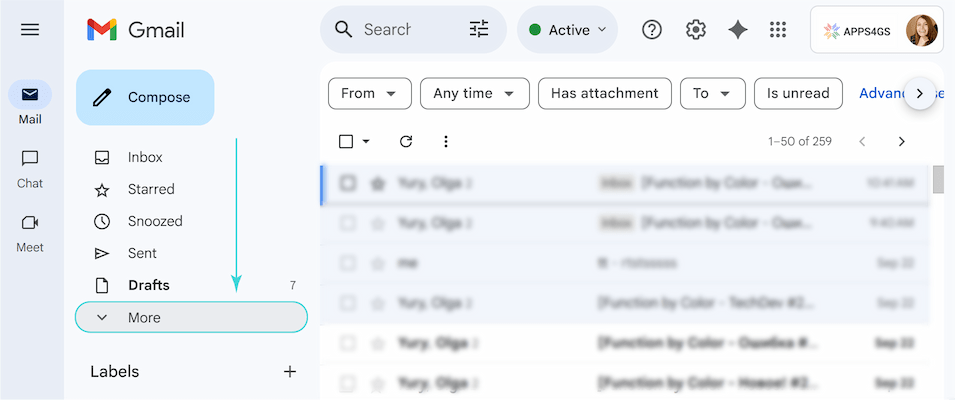
- Scroll down to the All Mail label and click it to view the content.
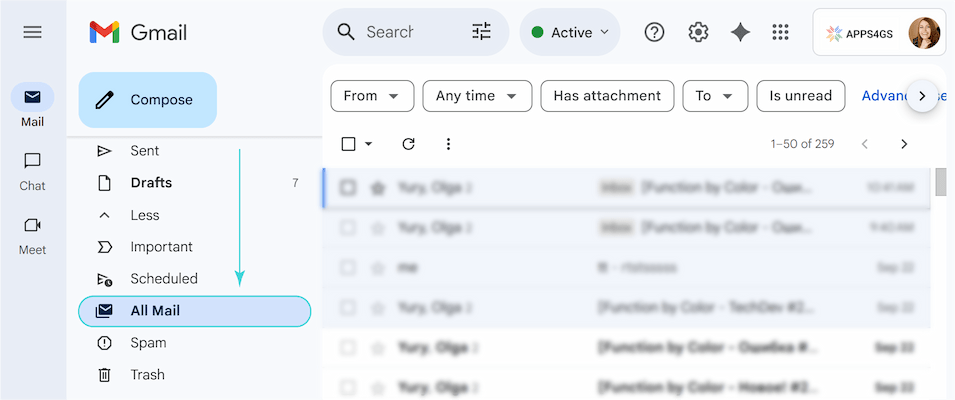
Unfortunately, there is no special button to see only archived emails: all your emails are mixed up here. This is where the search bar comes in handy.
How to search archived emails in Gmail
You can view the archived emails separately using Search:
- Open Gmail and click the Search bar.
- Type in:archive and hit Enter.
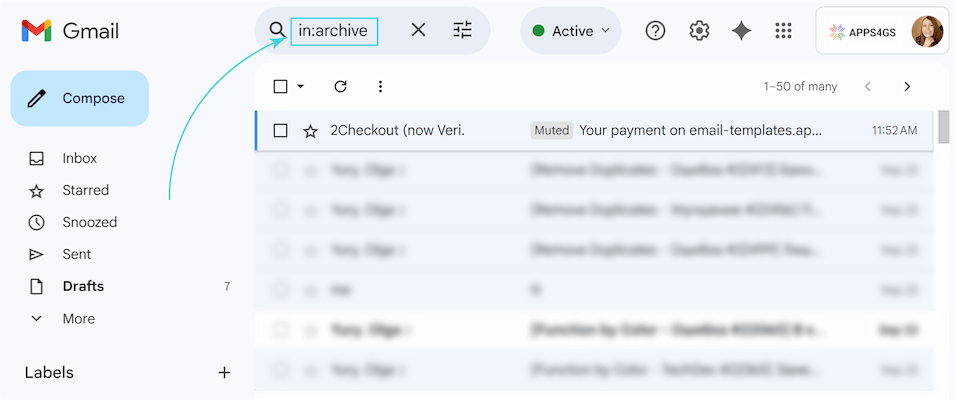
The search will automatically filter your emails and display only the archived ones.
Note: You may also find some emails from your inbox here, as Gmail shows the entire thread if even one older message within it was archived.
How to access archived emails in Gmail quickly
For advanced search, you can combine in:archive with other operators to narrow your search:
- From a particular person: in:archive from:john.doe@gmail.com
- Within a specific date range: in:archive after:2025/01/01 before:2025/09/25
- Containing distinct words: in:archive "ticket"
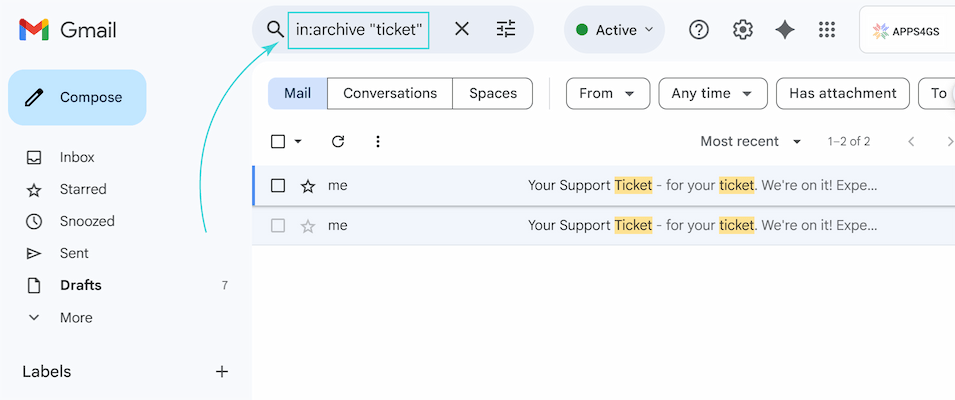
You can also use filters like Subject line or Has the words to find specific archived emails without typing operators. To do so, click Show search options on the right side of the search bar and enter your search terms.
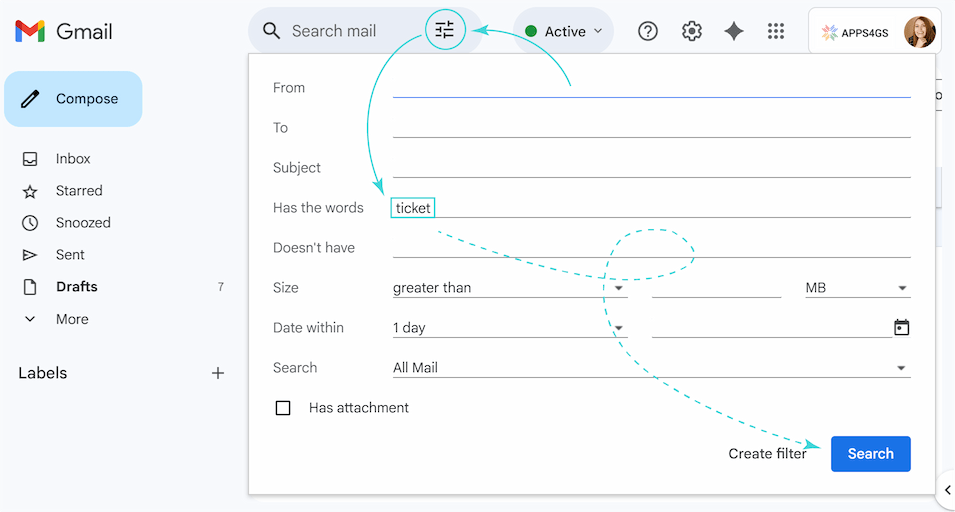
For even faster navigation, use keyboard shortcuts.
To enable shortcuts in Gmail:
- Go to Settings > See all settings > General > Keyboard shortcuts.
- Select Keyboard shortcuts on and click Save Changes at the bottom of the settings page.
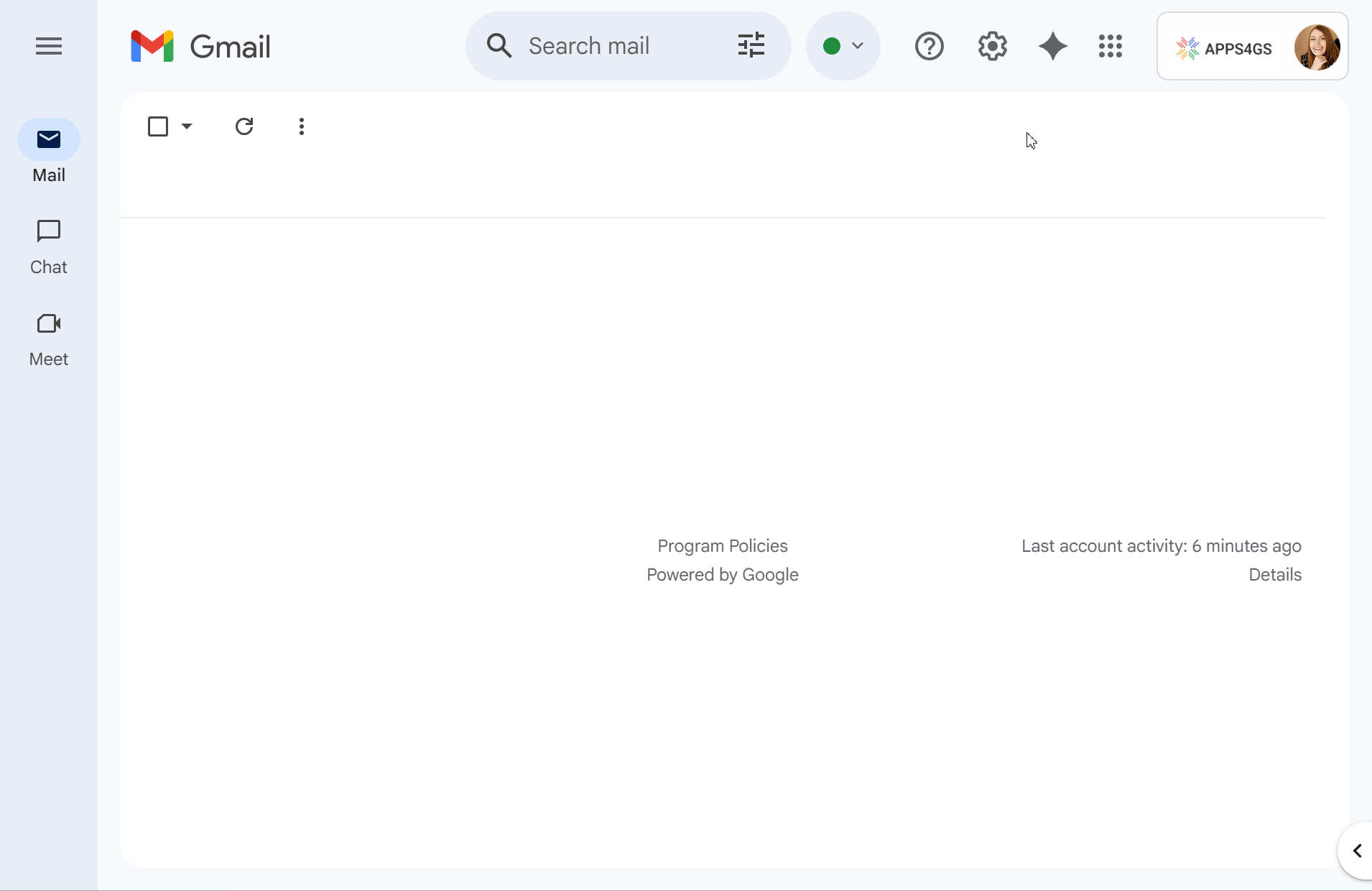
Then you can press G to open the Go to navigation menu and A to select All Mail. This two-key combination will immediately take you to the All Mail view.
How to retrieve archived emails in Gmail
Retrieving your archived emails simply means placing them back in your inbox.
If you've just archived an email by mistake, you can undo it:
- Look for the Undo notification at the bottom-left of the screen.
- Click Undo within 5 seconds to cancel the action.
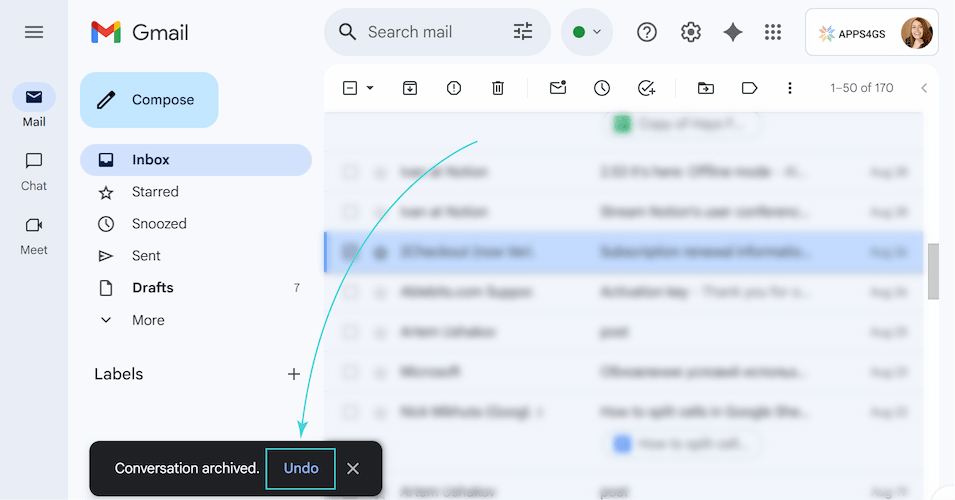
Note: You can extend your Undo window, learn how to do it in this article.
To restore archived emails from the All Mail folder, follow these steps:
- Tick the box to the left of the sender's name to select the archived message.
- Click Move to inbox in the toolbar.
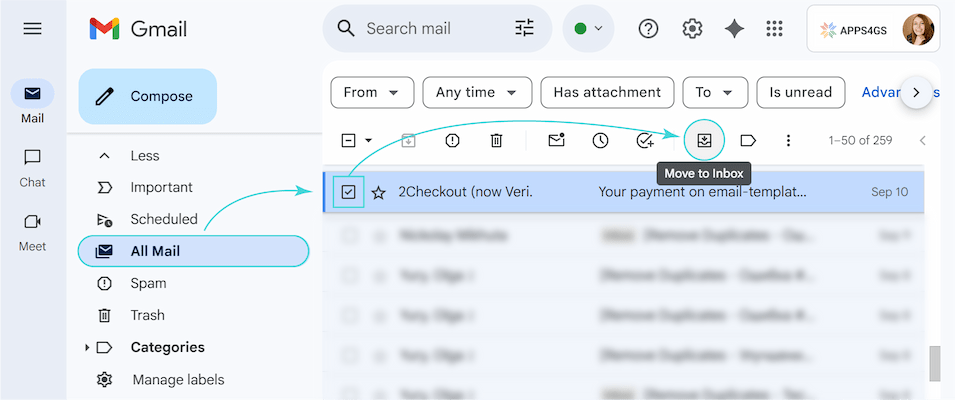
Note: If you're retrieving archived emails not from All Mail, but from some other labels or search results, you may not have a direct icon to move to inbox. In this case, click Move to and choose your Inbox (or any other label you want).
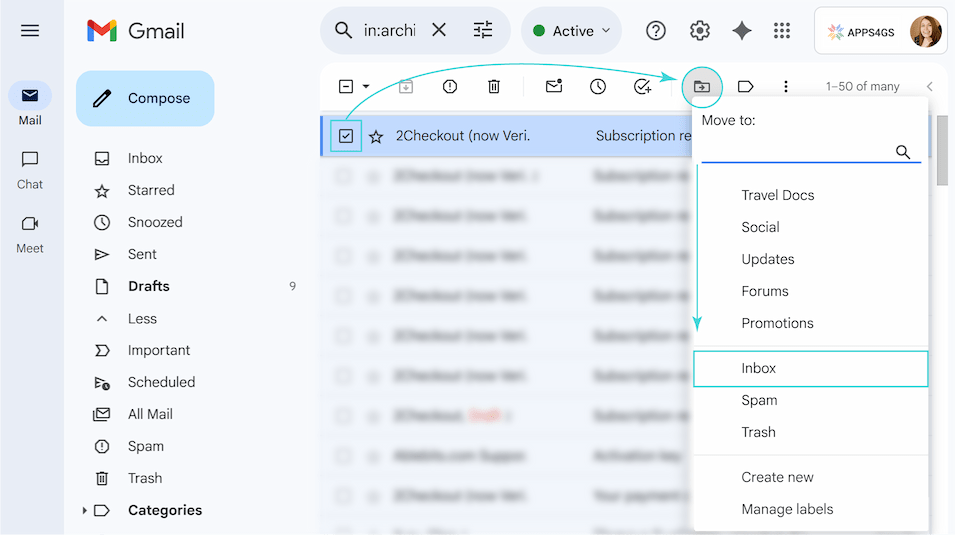
Your email will appear in your inbox again.
Productivity tips for email management
Now that you know how archiving works, let’s learn some tips to get the most out of the function and optimize your workflow 💪.
How do I delete archived emails in Gmail?
Your archived emails are removed from the inbox, but stored in All Mail.
To delete them permanently follow these instructions:
- Find and select the archived messages you want to delete.
- Click Trash in the toolbar.
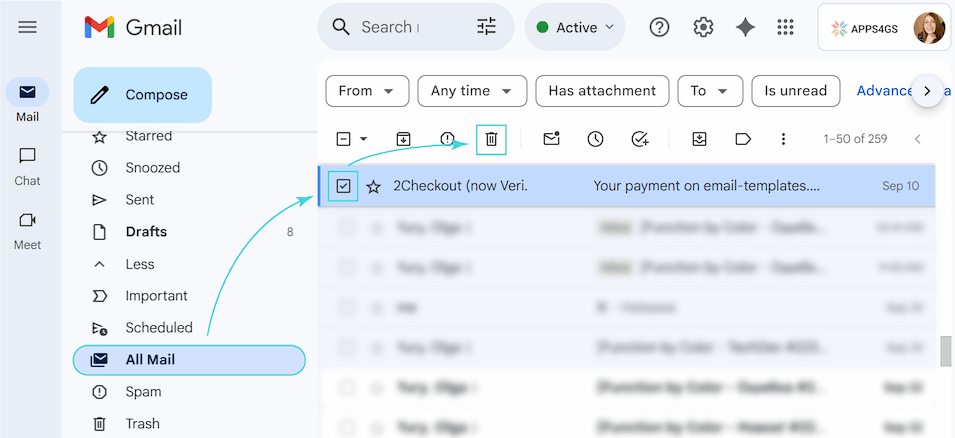
How to automatically archive emails
If you're sending a message in Gmail that you don't necessarily want a reply for, you can send and archive it:
- Open Gmail.
- Click Settings > See all Settings > General tab.
- Scroll to the Send and Archive section and select Show "Send & Archive" button in reply.
- Click Save Changes.
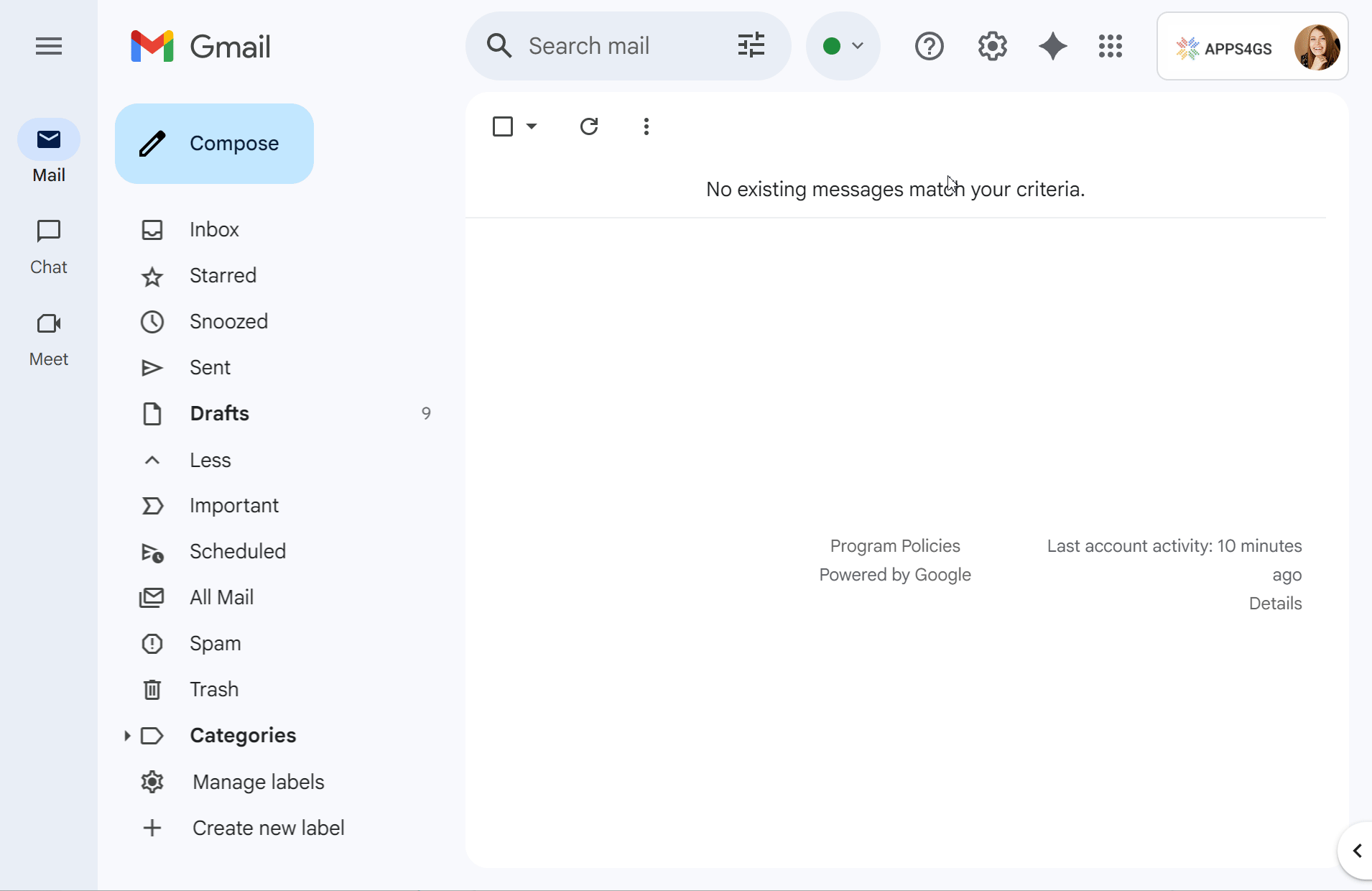
- Open an email you want to respond to and click Reply.
- Create an email and click Send+.
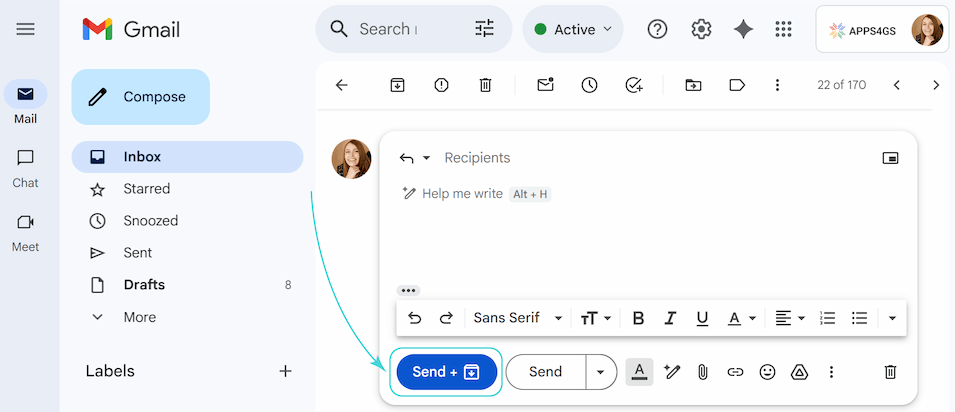
With this setting, your archived email will stay in the All Mail folder unless someone responds to it. After a reply, your archived conversation reappears in the inbox. But as soon as you click Send+ in reply to that email, Gmail will automatically re-archive the entire thread.
How to bulk archive emails in Gmail
To archive multiple messages, you’ll need to:
- Open your Gmail inbox.
- Click Select all checkbox at the top (or use the dropdown menu for more specific options).
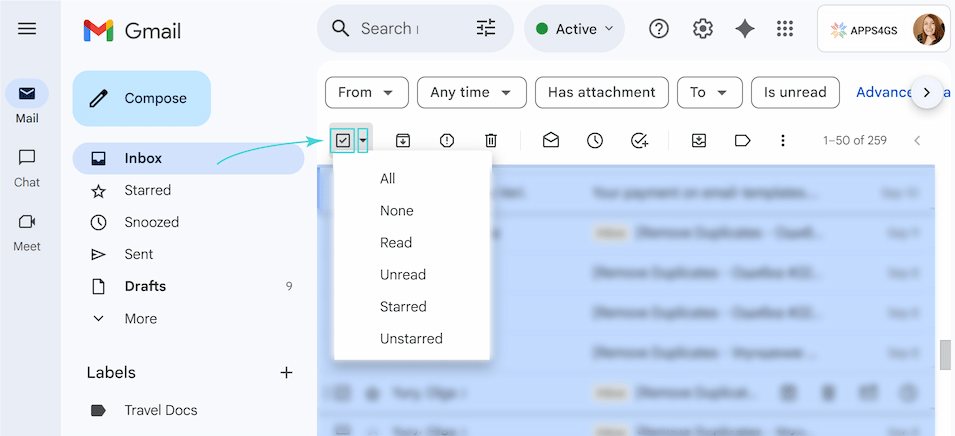
- Hit the Archive button.
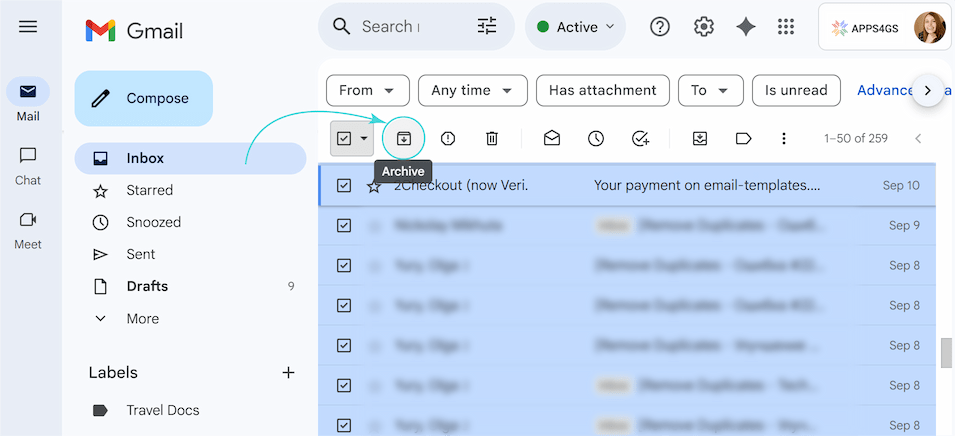
In this case, all the selected messages from your inbox will be archived.
How to mass archive emails by search query
To archive multiple emails that meet specific criteria, follow these instructions:
- Use the search bar at the top of your Gmail.
- Enter a search query such as before:2025/09/01 to find all emails from before this date.
- Press Enter to view the search results.
- Check the Select all box again and click the Archive button.
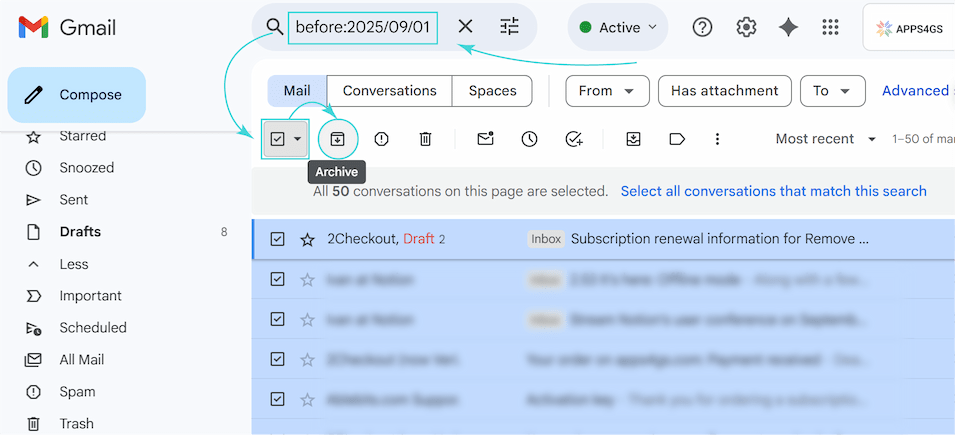
Using this method, all your messages before 2025/09/01 will be bulk archived.
How to create a filter to automatically archive emails in Gmail
In Gmail, you can set up a rule to automatically move specific incoming emails from the inbox to the archive. This way, you’ll keep your inbox clean while preserving the emails for future search.
To do this, you need to create a filter that targets specific emails and immediately sends them to All Mail. The key point is: when configuring your filter actions, check the Skip the Inbox (Archive it) box. This tells Gmail to bypass the inbox entirely and send the message straight to your archive.
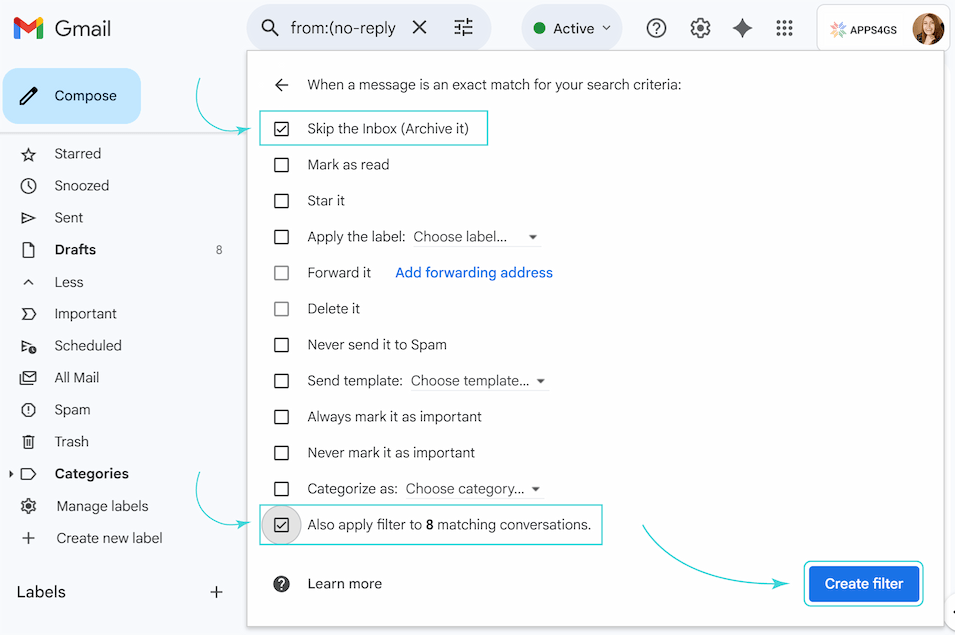
Tip: Check Also apply filter to matching conversations to archive all existing emails that meet your criteria.
You can follow the full step-by-step instructions in our comprehensive guide to creating Gmail filters.
Organize Gmail better with archive and labels
Imagine that you open your inbox and immediately see only what needs your attention today. Pretty convenient, right?
There is a whole strategy called Inbox Zero, whose goal is to triage your emails quickly to reduce clutter. According to this strategy, your inbox is for active tasks only, not for storage. Every incoming email should be immediately processed by being deleted, delegated, responded to, or archived:
- Delete old notifications, conversations that are no longer relevant, or any message that has zero long-term value.
- Delegate emails containing tasks or questions, if you are not the right person to handle it.
- Respond to emails, if you can read, understand, and type a reply in two minutes or less.
- Archive any email that you don't delete, delegate, or respond to immediately.
And since this article is about archiving, let's take a closer look at the last point. Archiving here is your go-to action for anything you might need later. To keep your archive organized create custom labels (which function like folders) to sort messages by topic, urgency, or sender type.
The ideal workflow is simple: before you hit the Archive button on an email, first apply a relevant label like Invoices or Travel Docs. You can take this a step further and set up filters to label and archive recurring emails like receipts or notifications.
Tip: Want to set up this automatic system? We have a step-by-step guide on how to create labels and use filters to auto-organize your Gmail. Check it out to stop sorting emails manually!
Centralized hub with Shared Email Templates
If you’re working within a team that handles a high volume of repetitive emails, e.g., customer support or sales, a centralized hub for approved responses can significantly improve your workflow.
With Shared Email Templates there will be no need to archive canned responses to maintain consistency, or jump between drafts to find a suitable template. You can build a shared library of pre-written templates directly within Gmail. This ensures everyone on your team uses the most up-to-date messages to answer frequently asked questions, send marketing follow-ups, or onboard new clients.
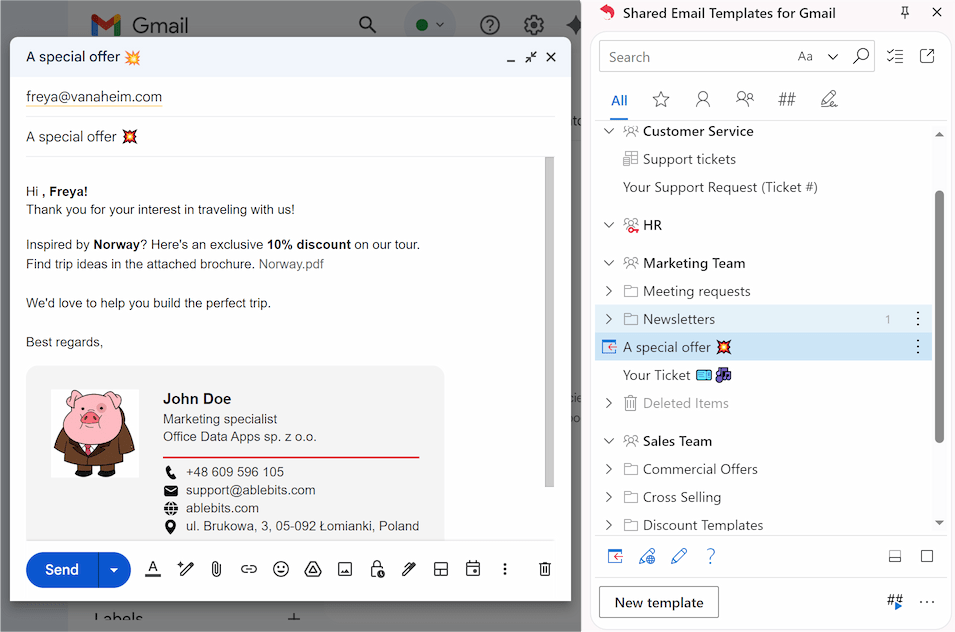
Once the reply is sent, archive the conversation. This creates a highly productive loop where templates ensure quality and speed, while archiving keeps the workspace clean and ready for the next task.
As a result, you’ll get the inbox with fewer complex conversations to track and a less cluttered archive because each interaction is resolved more efficiently. Click the button below to try it for free and see the difference for yourself 👇.
FAQ
Why archive emails in Gmail?
The main reason to archive is to remove emails from your inbox while saving them for future use
How do I read archived Gmail?
Find the archived email and tap to open the message.
How long are archived emails kept in Gmail?
Indefinitely. They will remain in your account unless you manually delete them.
Does archiving emails save Gmail space?
No. The message still exists in your All Mail folder and takes up the exact same amount of storage space. If you need to free up space, you must delete it and then empty the Trash folder.
How do I find the archive folder in Gmail?
There is no dedicated Archive folder in Gmail, all archived emails are stored in All Mail.
What if I cannot locate archived email in All Mail?
Check your Trash and Spam folders, as it could have ended up there by mistake.
What happens when someone replies to an archived email?
When someone replies to an archived email, the entire conversation will return to your inbox.
Why do my emails get archived automatically?
You may have a filter set up. Check your filters under Settings > See all settings > Filters and Blocked Addresses.
 by
by